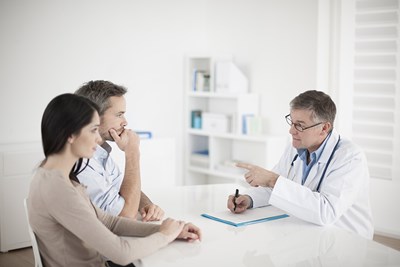During a flexible sigmoidoscopy, the doctor looks at part of the colon and rectum with a sigmoidoscope--a flexible, lighted tube about the thickness of a finger with a small video camera on the end. This tool is used to detect and deter the incidence of colon cancer and other digestive diseases. The sigmoidoscope is inserted through the rectum and into the lower part of the colon. Images from the scope are viewed on a display monitor.
Using the sigmoidoscope, your doctor can view the inside of the rectum and part of the colon to detect (and possibly remove) any abnormality. Because the sigmoidoscope is only 60 centimeters (about 2 feet) long, the doctor is able to see the entire rectum but less than half of the colon with this procedure.
Test Preparation
Before the test, the colon and rectum must be empty and clean so your doctor can view the lining of the sigmoid colon and rectum. Your doctor will give you specific instructions to follow to clean them out. You may be asked to follow a special diet (such as drinking only clear liquids) for a day before the exam. You may also be asked to use enemas or to use strong laxatives to clean out your colon before the exam.
The Procedure
A sigmoidoscopy usually takes 10 to 20 minutes. Most people do not need to be sedated for this test, but this may be an option you can discuss with your doctor. Sedation may make the test less uncomfortable, but you will need some time to recover from it, you’ll need someone with you to take you home after the test.
You will probably be asked to lie on a table on your left side with your knees positioned near your chest. Your doctor should do a digital rectal exam, or DRE (inserting a gloved, lubricated finger into the rectum), before inserting the sigmoidoscope. The sigmoidoscope is lubricated to make it easier to insert into the rectum. The scope may feel cold. The sigmoidoscope may stretch the wall of the colon, which may cause bowel spasms or lower abdominal pain. Air will be placed into the sigmoid colon through the sigmoidoscope so the doctor can see the walls of the colon better. During the procedure, you might feel pressure and slight cramping in your lower abdomen. To ease discomfort and the urge to have a bowel movement, it helps to breathe deeply and slowly through your mouth. You will feel better after the test once the air leaves your colon.
Colonoscopy
If a small polyp is found during the test your doctor may remove it with a small instrument passed through the sigmoidoscope. The polyp will be sent to a lab to be looked at by a pathologist. If a pre-cancerous polyp or colon cancer is found during the test, you will need to have a colonoscopy later to look for polyps or cancer in the rest of the colon. While a colonoscopy is able to examine the entire colon, it is considered more painful. If you opt to have a flexible sigmoidoscopy instead of a colonoscopy, talk to your doctor about a fecal occult blood test, which can be used to detect signs of cancer in stool samples.



